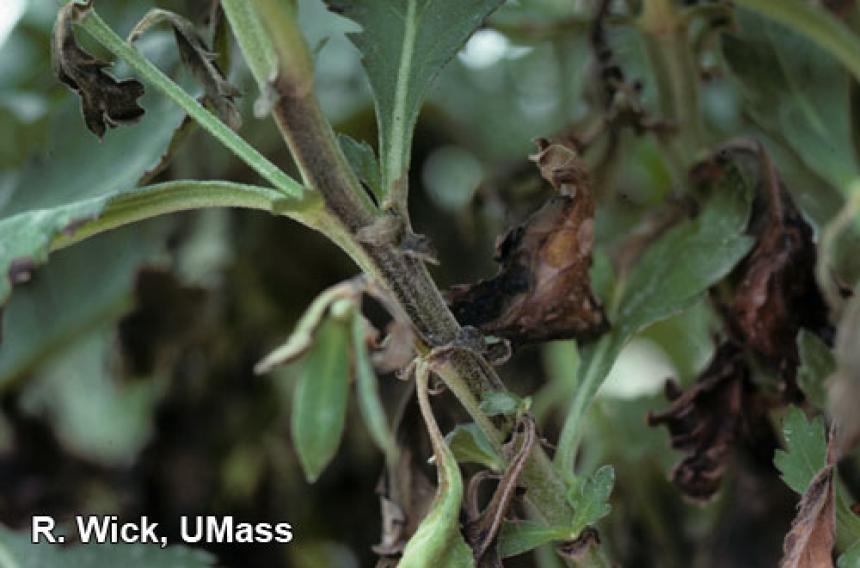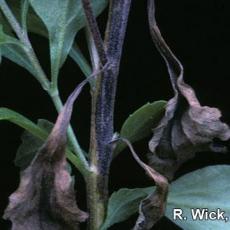Pseudomonas cichorii causes leaf spot and blighting symptoms indistinguishable from P. syringae. The pathogens can be differentiated in a Diagnostic Lab by biochemical and physiological characters. P. cichorii causes disease on a wide range of vegetable, flowering ornamentals, and foliage plants. Host specificity is not known to exist. Bacterial diseases of the foliage are highly favored by high relative humidity and prolonged periods of leaf wetness. Chrysanthemums and other hosts are known to carry epiphytic (on top of leaf surfaces) populations of P. cichorii; long range distribution of the pathogen results from these populations. Once environmental conditions become favorable for the bacteria, disease development and spread occurs. Bacterial pathogens are spread within a greenhouse by splashing water and in the field by wind-driven rain. Sanitation is the most important disease management principle. Remove and destroy affected plants and infected plant debris. Minimize splashing and reduce leaf wetness duration by watering early in the day or subirrigating. Reduce relative humidity by improving air circulation with fans, plant spacing, and by heating and venting. Do not handle plants when foliage is wet. Copper products are registered for control, but bactericides are only marginally effective in controlling bacterial diseases. Sanitation and environmental control are extremely important.




